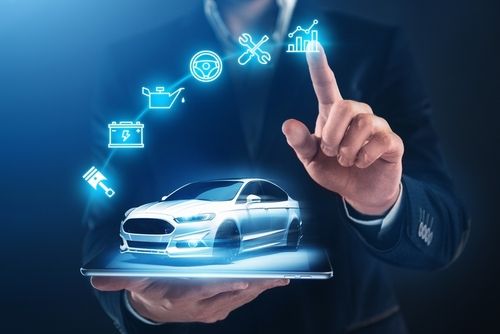In the ever-evolving automotive industry, vehicle computer systems have become the cornerstone of modern car functionality. From managing basic engine operations to enabling advanced driver-assistance features, these systems have significantly transformed the way vehicles are built, maintained, and driven. This blog explores the fascinating history of automotive computer systems, their advancements, and their role in diagnostics, maintenance, and performance optimization.
The Birth of Automotive Computer Systems
The journey of vehicle computer systems began in the late 1960s when automakers sought ways to improve fuel efficiency and reduce emissions. The introduction of the first electronic control unit (ECU) in 1968 by Volkswagen marked a significant milestone. This early ECU was used in the Volkswagen Type 3 and controlled the fuel injection system, paving the way for the development of more sophisticated systems in the years to come.
By the 1980s, the automotive industry saw widespread adoption of onboard diagnostics (OBD). The first-generation OBD systems (OBD-I) provided basic diagnostic information, allowing technicians to identify faults through simple codes. This innovation laid the foundation for more advanced diagnostic tools and software.
The Rise of Advanced Automotive Computer Systems
The introduction of OBD-II in the mid-1990s was a game-changer. This system standardized diagnostic trouble codes (DTCs) and provided real-time data access, enabling technicians to perform detailed diagnostics and repairs with greater accuracy. OBD-II remains the standard in modern vehicles, with features like data logging, real-time monitoring, and compatibility with various diagnostic tools.
Today’s automotive computer systems are far more complex, consisting of multiple ECUs that communicate through a network. Modern vehicles often feature dozens of ECUs, each responsible for specific functions such as engine control, transmission, infotainment, safety systems, and climate control. These systems use Controller Area Network (CAN) protocols to ensure seamless communication and integration across all components.
Key Advancements in Vehicle Computer Systems
- Enhanced Performance and Efficiency Automotive computer systems have revolutionized engine performance and fuel efficiency. Through precise control of fuel injection, ignition timing, and turbocharging, these systems optimize power output while minimizing fuel consumption and emissions.
- Advanced Driver Assistance Systems (ADAS) Features like adaptive cruise control, lane-keeping assist, and automatic emergency braking are made possible by sophisticated computer systems that process data from sensors, cameras, and radars.
- Electric and Hybrid Vehicles The rise of electric and hybrid vehicles has further pushed the boundaries of automotive computer systems. Battery management systems (BMS) and regenerative braking are just a few examples of innovations driven by advanced computing technologies.
- Autonomous Driving The development of autonomous vehicles relies heavily on cutting-edge automotive computer systems. These systems integrate artificial intelligence, machine learning, and real-time data processing to enable self-driving capabilities.
The Role of Computer Diagnostic Software at Euro Plus Automotive
Modern auto repair shops, like Euro Plus Automotive, rely on computer diagnostic software to diagnose and repair vehicle issues accurately. These tools interface with a car’s OBD-II port to retrieve diagnostic trouble codes, monitor real-time data, and perform system tests. Advanced diagnostic software can even reprogram ECUs, update firmware, and customize vehicle settings.
Popular diagnostic tools used by auto repair shops include:
- Snap-on® Diagnostic Tools
- Bosch Automotive Diagnostics
- Autel Scan Tools
- Launch Tech USA
These tools have made it easier for technicians to identify problems, reduce repair times, and improve customer satisfaction.
Future Trends in Automotive Computer Systems
As technology continues to advance, the future of automotive computer systems looks promising. Key trends include:
- Increased Connectivity: The integration of Internet of Things (IoT) technologies will enable vehicles to communicate with other cars, infrastructure, and devices.
- Over-the-Air (OTA) Updates: Automakers can remotely update software, fix bugs, and add new features without requiring a visit to the repair shop.
- Cybersecurity Enhancements: As vehicles become more connected, protecting them from cyber threats will be a top priority.
The Evolution of Basic Engine Controllers to Sophisticated Networks
Vehicle computer systems have come a long way since their inception, evolving from basic engine controllers to sophisticated networks that manage nearly every aspect of a car’s operation. These advancements have not only improved vehicle performance and safety but have also revolutionized the auto repair industry through advanced diagnostic software. As automotive technology continues to progress, the role of these systems will only grow, shaping the future of mobility.
For reliable service and repairs, trust Euro Plus Automotive. We're a shop equipped with cutting-edge diagnostic tools and expertise in automotive computer systems. Contact us today to learn more about how we can keep your vehicle running at its best!


